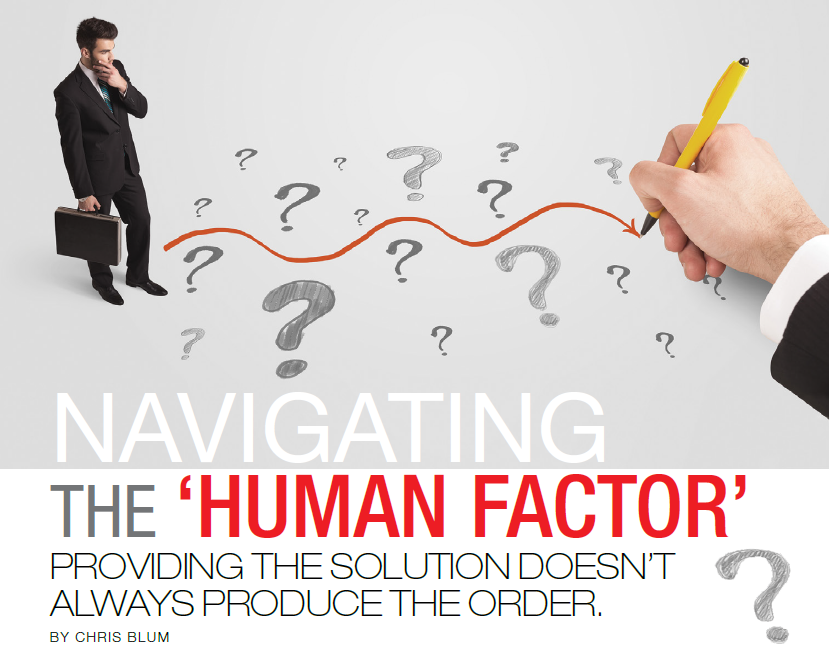 |
| istockphoto.com |
You’re a technical specialist for a metalworking-focused distribution company that has a large breadth and depth of products and documented solutions. Your customer is on the struggle bus. He cannot produce quality parts that meet demand due to machining constraints and a lack of knowledge about new approaches to machining and available products. Through your technical prowess, however, and broad access to quality vendors, you present a new product and alter his process – which not only improves the quality of his parts but reduces his time to make them by half.
This is the proverbial win that so many of our vendor partners emphasize, which results in tools practically selling themselves. Jackpot! Homerun! Your customer documents the new machining process, changes his programs, and requests a quote for your magic tool. You call customer service and in 30 minutes your customer has a quote in hand.
Now it’s quote + 1 day. No order. Maybe it is making its way through purchasing? Then, your vendor calls to let you know the EDP for the test tool you took to your customer just got ordered in a 100-piece quantity by your competitor. How did this happen?!
Truth is, this isn’t an unusual occurrence. We put in the work, show the value, document the savings, and lose the order. Generally, a few different reasons lie beneath the surface. Regardless of the specifics, all of these cases are linked to the fact that we are dealing with human beings who are tasked with making decisions – decisions that don’t always align with ours, or even of their own team members. Consider what’s happening behind the scenes:
- The customer’s purchasing department got the EDP from engineering, and they sent the RFQ to you and two other competitors. You were 5% higher, so you didn’t get the order. Maybe engineering went to bat for you after they found out – but that might not matter. Purchasing is tasked with showing a price savings. Their bonus is tied to it, and they just chalked up 5%.
- Wait! You got special pricing from the manufacturer – there’s no way a competitor could quote the same price. Would your competitor have access to the quoted price you provided and get the opportunity to beat it? Maybe. You suddenly realize your competition has been spending a lot of time with your customer in and out of the plant. Hmm.
- Manufacturer brand XYZ has a similar product. Your engineering contact found it on the internet, and this offshore doppelganger is half the price of yours. You already changed the customer’s process – it should be a “plug and play.” A bonus for him, and for purchasing. Yet, there’s no order for you.
The point is, all too often we forget that at the tip of the spear, we are sales personnel. If we are not conceptually or situationally selling ourselves, our company, our brand, our manufacturer, our technical ability, and more, we put sales at risk. You can’t ignore the “Human Factor.”
You probably never thought that Psychology 101 was a requirement to learn how to sell. Oh, but it is. In their simplest form – regardless of technical data, output, cost, or quality – decisions are made by human beings, and we may or may not have the ability to influence those decisions. Do we have a good plan to navigate those waters? Are we selling to the right people? Do we include purchasing like we should? Are we professional in how we present ourselves?
Ultimately, the human factor is summed up in one word: relationships. Do we understand the dynamics within our customer? Do we work through our regular sales calls in building relationships that go beyond just business or beyond just one of the decision makers? Relationship building is the prerequisite to winning the human factor war, and in reality, that war is not always going to be won. Often, our time can be better spent with other customers and prospects where we have a greater potential for success.
Are you willing to walk away? To pick and choose your battles? Keep working that human factor, and build those bonds at multiple levels. Good luck out there, and happy selling!
 |
Chris Blum is a metalworking, cutting tool, manufacturing, and industrial distribution professional with over 35 years in the industry. He can be reached at chris.blum@pts-tools.com.
This article originally appeared in the May/June 2025 issue of Industrial Supply magazine. Copyright 2025, Direct Business Media.













